* (restored/expanded)
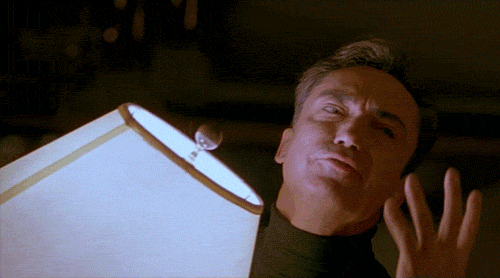
‘German cult actor Udo Kier has made a distinct mark for himself in the world of cinema with roles in everything from obscure European exploitation films to the most mainstream of Hollywood fare. Though as an actor Kier has made a name for himself by essaying frequently bizarre and sometimes sadistic film roles, the man himself is almost the complete opposite of the characters he portrays onscreen, exuding a flamboyant and personable earthy elegance that stands in stark contrast to his unforgettably cold, vampiric screen presence.
‘Born in October of 1944 in Cologne, Germany, Kier had a chance encounter with an aspiring young filmmaker named Rainer Werner Fassbinder before moving to Britain at the age of 18 to study English and acting. Shortly after Kier’s arrival, director Mike Sarne offered him the role of a gigolo in The Road to St. Tropez (1966), and with that film the young actor made his screen debut. Though Kier would appear in a few films rounding out the 1960s, it was his part in the controversial 1970 film The Mark of the Devil that would truly set his career path in motion. His role as a witch hunter apprentice who meets a gruesome demise horrified audiences, and the film was subsequently banned in many areas of the world.
‘Increasingly prolific in the following years, it was a pair of Paul Morrissey films from the mid-‘70s that would leave an indelible impression on not only European audiences, but American audiences as well. It was while on a flight from Rome to Munich that Kier made the acquaintance of director Morrissey, and shortly thereafter Kier was cast in the role of Baron Frankenstein in Andy Warhol’s Frankenstein (aka Flesh for Frankenstein). Filled to the brim with satirical gore and graphic violence, the notorious film immediately garnered an X-rating though it would become a hit with strong-stomached audiences who could appreciate its dark humor. Released that same year, Andy Warhol’s Dracula (aka Blood for Dracula) once again found Kier relishing in gore-drenched satire.
‘In 1977 Kier would appear before old friend Fassbinder’s lens in the television drama The Stationmaster’s Wife, the first of his many roles in Fassbinder films, and play a small role in Italian horror director Dario Argento’s Suspiria. The remainder of the 1970s as well as the majority of the 1980s, found Kier appearing frequently in European exploitation films with such lurid titles as G.I. Bro (1977) and Prison Camp Girls, Jailed for Love (1982). Though sharp-eyed American audiences could catch glimpses of Kier in such films as Moscow on the Hudson (1984) (in which he appeared uncredited), it was during this period that Kier would work almost exclusively in Europe. Though American audiences didn’t necessarily bear witness to most of Kier’s work in the 1980s, his career continued to flourish overseas and the actor began to develop a strong personal and professional relationship with director Lars von Trier. Following his appearance in von Trier’s Medea (1987), Kier would not only appear in all of the director future films, but also become the godfather of von Trier’s daughter Agnes as well.
‘It was Kier’s role in director Gus Van Sant’s My Own Private Idaho (1991) that brought the actor back to stateside audiences, and following his memorable appearance in the film, Kier would appear in such big-budget American films as Johnny Mnemonic (1995), Armageddon (1998), and Blade (also 1998). Despite appearances in such mainstream comedies as Ace Ventura: Pet Detective (1994), Kier would remain true to his European roots by simultaneously appearing in numerous foreign films such as von Trier’s Europa (1991) and the gleefully amoral Terror 2000 (1992). With the millennial turnover bringing Kier more stateside exposure than ever, following a memorable turn in Shadow of the Vampire (2000), the tireless actor would appear in no less than eight films in 2001 alone, including Werner Herzog’s Invincible and the apocalyptic thriller Meggido: The Omega Code 2.
‘His feature career continuing to flourish, Kier could now be considered a full-fledged star, as appearances in numerous commercials and music videos by such popular acts as Korn virtually guaranteed that while he might not necessarily be a household name, his face would be instantly recognizable by virtually anyone. Though he continued to appear in numerous mainstream films, his experimental side could be evidenced by his appearances in films by Guy Maddin, Werner Herzog, and with his participation in director von Trier’s film Dimension. The production of the film would span 30 years, following the actors (without makeup) as they aged. The actors and director got together once a year to shoot a scene. Spending much of his free time in nature, Kier enjoys gardening, enjoying the company of his dog, and working on his home in California.’ — mubi
___
Stills
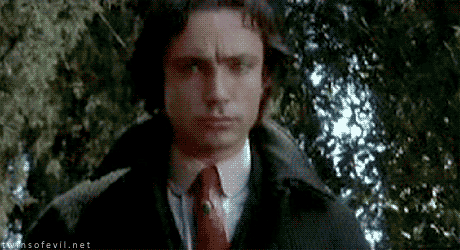
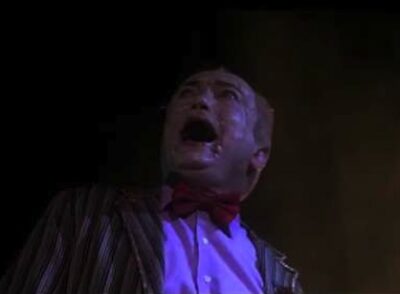
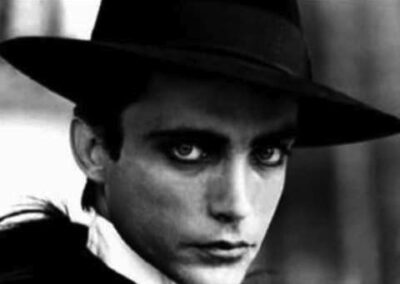
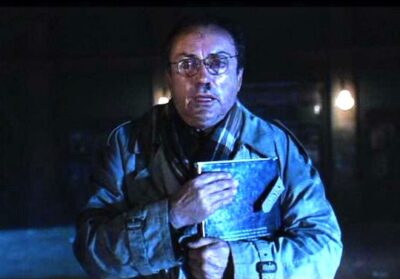
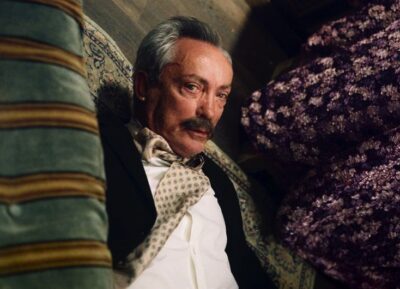
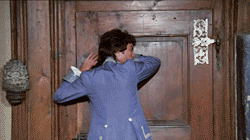
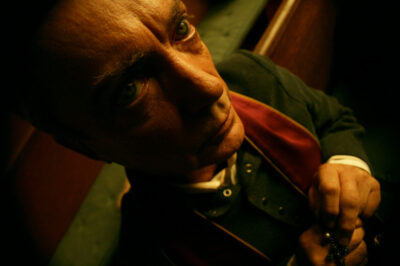
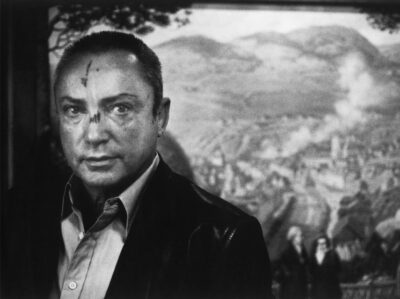

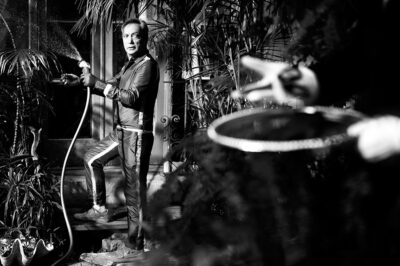

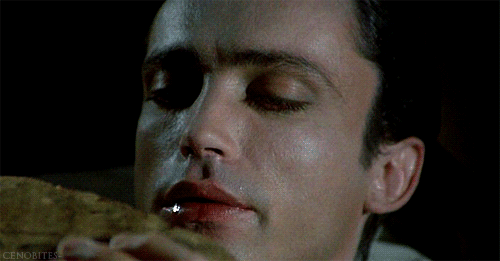
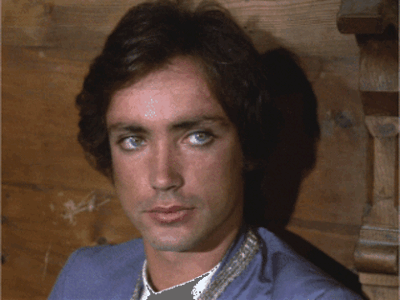
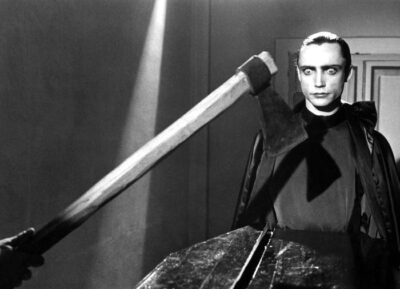
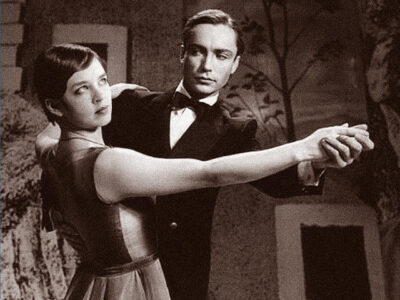
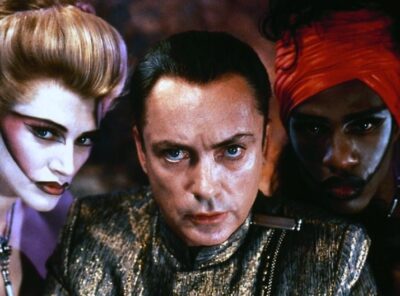
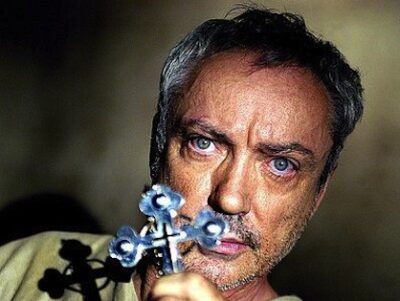

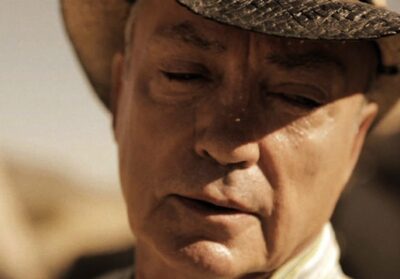
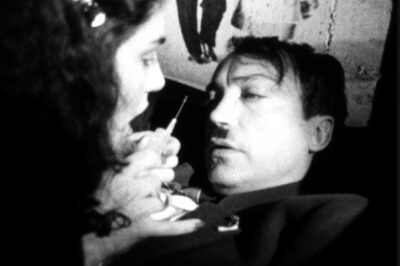

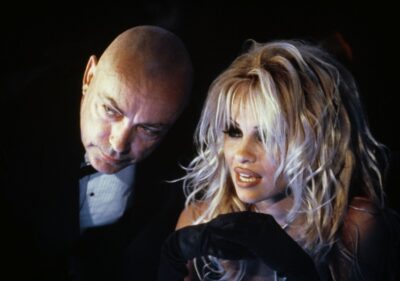
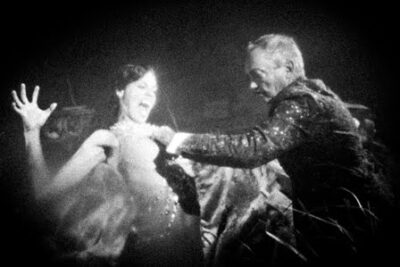
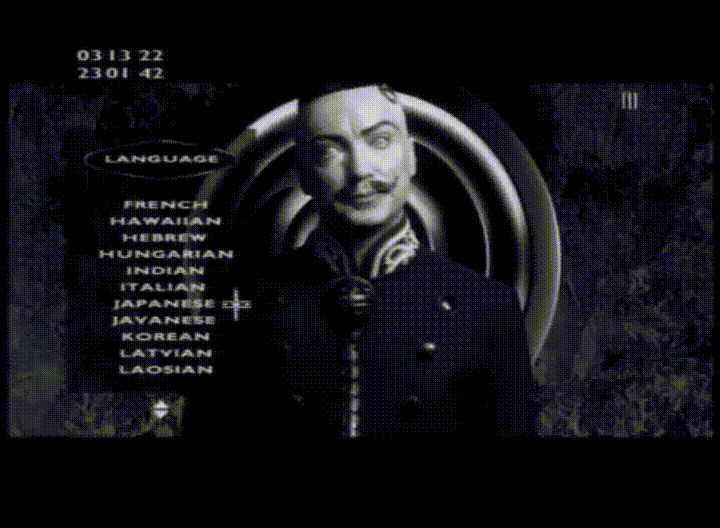



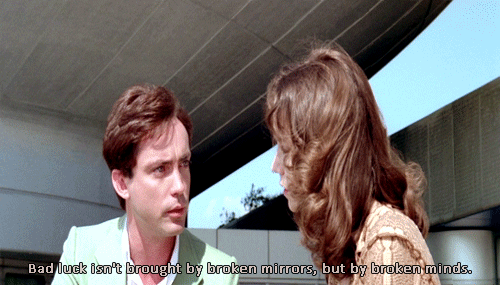





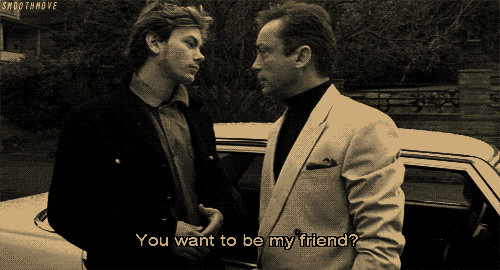







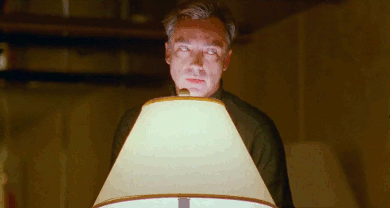

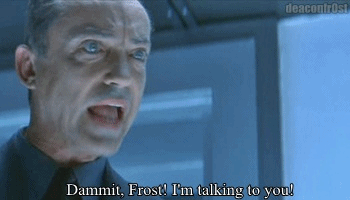

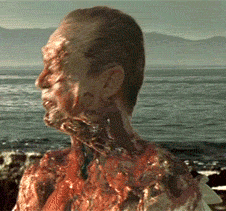













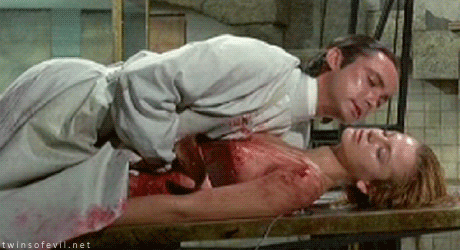
_____
Further
Udo Kier: The Official Website
Fuck Yeah Udo Kier
Udo Kier interviewed @ The A.V. Club
Udo Kier @ Box Office Data
‘Udo Kier on film, life and being happy’
‘Udo Kier: Space Nazi’
’20 Fun Facts About Teen Heartthrob Udo Kier!!!!’
Udo Kier @ Vimeo
Udo Kier interviewed @ Index Magazine
‘Why Udo Kier Loves Guy Maddin’
‘Udo Kier goes bat-sh*t bonkers’
Udo Kier products @ Amazon
___
Misc.
Trailer: ‘ICH – UDO’
Udo Kier on ‘The Mark of the Devil’
Udo Kier vs. a Stormtrooper
Udo Kier does the Sirtaki Dance
_______
Interview
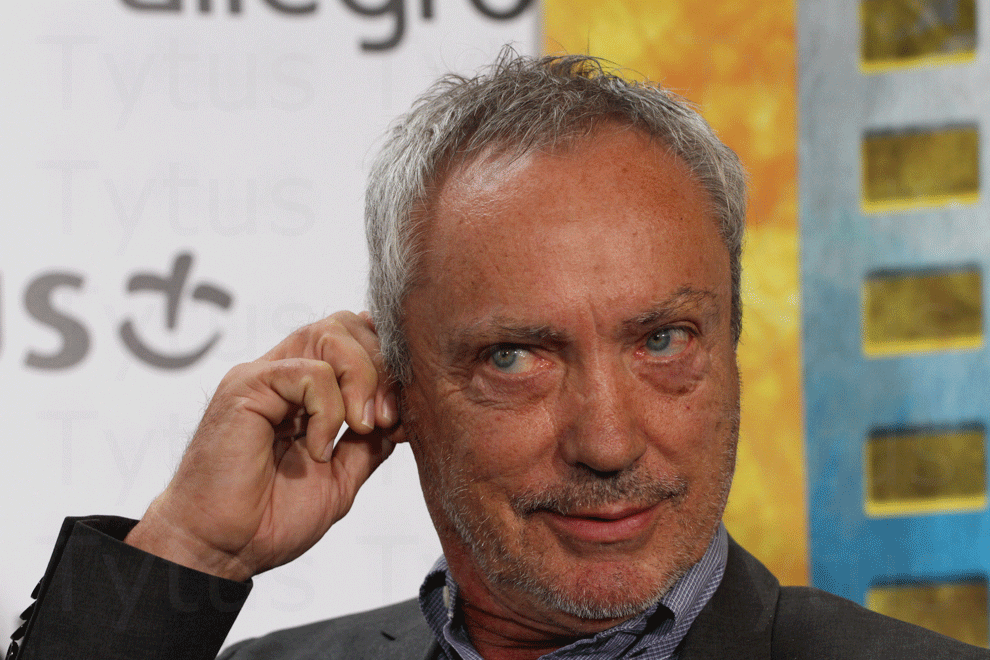
from Dazed & Confused
You have an appreciation for both high art and lowbrow. How do you decide what projects you want to do?
Udo Kier: I’m not very career-driven, never was. I met Paul Morrissey on an airplane. I met Fassbinder in a bar when he was 15 and I was 16. Gus van Sant I met at the Berlin film festival, and he came up to me. He had a little film in the festival called Mala Noche that he had made for $20,000. He said: ‘You are one of my favourite actors. I’m doing My Own Private Idaho with River Phoenix and Keanu Reeves. You should be in it!’ Then I started working with Gus. I owe Gus my social security number – he sponsored my US visa! Anyway, I’m very grateful to him. After the premiere of Even Cowgirls Get The Blues, I stayed with a girlfriend in Los Angeles and she said, ‘Why don’t you stay here? Why don’t you get a little car and little apartment for $400 a month and just try it?’ I said, ‘No.’ Of course, after three glasses of red wine, I said, ‘Not a bad idea…’ That was 21 years ago.
Tell me about ‘Sitting On A Bullet’ – the song you perform in My Own Private Idaho while shining a lamp under your face…
UK: I always wanted to make music but I cannot play any instrument. I told Gus about the time I was performing in Moscow at the Olympic stadium and they forgot to give me a microphone. I had three songs and I didn’t know what to do. I was in front of 20,000 people. So, I just performed with the flashlamp under my face. Gus said to me on the day, ‘Why don’t you sing to the boys like you did in Moscow? We cannot use a flashlamp because it’s like Dennis Hopper in The Railroad.’ He said I should use a very big living room lamp instead. I said: ‘I cannot dance with that big lamp!’ But of course, I did.
What was the most fun day of your life?
UK: Fun? Well, I know the day I was born was the most important day, not because my mother gave life to me, but how dramatic the story was. I was one hour old and the nurse was collecting all the babies – the newborns – from their mothers and cleaning them. My mother said: ‘Could I hold him a little bit longer?’ and the nurse said yes. Then the wall of the hospital collapsed over her – the building had been bombed. My mother was lucky because her bed was in a corner, so it was architecturally protected. She held me with one arm and with the other she made a hole in the rubble until they freed her, with me. I was two hours old. That is how I was born.
Indeed, very dramatic. Where did you meet Fassbinder?
UK: In a working-class bar in Cologne. There were truck drivers and secretaries and the first transvestites and people working on the street – a real bar. It was called Bar Leni. But we never talked about film. We were teenagers. Later, when I went to England, I saw a magazine and there was a double page spread about Fassbinder. I said, ‘I know him!’ Then, of course, I worked with him many times.
How did you come to be in Warhol’s Dracula and Frankenstein movies?
UK: I was in an airplane flying from Rome to Munich and there was a man sitting next to me. He said, ‘What do you do?’ and I said, ‘I’m an actor’. I hadn’t even finished the word ‘actor’ and I already had a photo of myself under his nose. He said, ‘Give me your number,’ and wrote my telephone number on the last page of his American passport. He said his name was Paul Morrissey and he worked with Andy Warhol. Then I got a call a couple weeks later and he said, ‘Well, I am doing a little film…’ I asked, ‘What do I play?’ He said, ‘Frankenstein.’
And how did the role in Dracula come up?
UK: The last day of shooting Frankenstein I was in the canteen, dressed as Frankenstein, thinking that everything was over – I’d had my three weeks of fame. I had a little bottle of wine for lunch. Paul Morrissey came in and said, ‘Well, I guess we have a German Dracula.’ I said, ‘Who?’ He said, ‘You! But you have to lose at least 10lbs.’ I didn’t eat any more. I just had salad leaves and water. That’s why I was in a wheelchair for so many of my scenes – I had no power to stand up any more. It’s not only Robert de Niro who prepares himself in this way.
You’ve been in every single Lars von Trier film, aside from the ones shot in Danish. How did that relationship begin?
UK: I made a short film that went into competition at the Mannerheim Film Festival in Germany – a very intellectual festival. My short film went in against Lars von Trier’s Elements Of Crime. I knew I wanted to meet whoever made that short film. I expected him to be someone like Kubrick – shy, in a bad mood, dressed in black. But there came a young boy, and we were talking about Fassbinder and Tarkovsky. A few weeks later he called and asked me to be in his film Medea.
Has time ever slowed down or sped up for you?
UK: If I was to write an article about myself, the headline would be Time Is The Sin. Time is the real sin. I am 21 years in America. I mean 21 years. That’s definitely a quarter or your life – I’m already here, and I’ve been years in Paris and years in Rome, and now I’m living 21 years here and I think it’s going to be the stage where this is where I am going to stay. When you get older time moves faster – much faster. Now I am 66. That’s why I like it here in Palm Springs. Everyone is older than me. When I go to a restaurant everyone says, ‘Young man, can you pass the salt?’
__________________
28 of Udo Kier’s 276 films
___________________________
Paul Morrissey Flesh for Frankenstein (1973)
‘If you’re in the properly receptive mindset to appreciate the artistry of director Paul Morrissey’s Flesh for Frankenstein, you may experience an unexpectedly delightful shift in attitude while watching the film. At first it appears that Morrissey is indulging in an exercise of pure camp (and it’s true, he is), but then it hits you: underneath all the wretchedly awful dialogue and seemingly deliberate bad acting, it’s clear that Morrissey and his cast are up to something wonderful. Not only is this a seductively beautiful film to watch–even the abundant bloodshed and gory scenes of dismemberment are esthetically striking–but it’s been conceived with astute intelligence and a wealth of refined humor, while maintaining connections to the resonant themes of the Frankenstein story. In this case, Baron Frankenstein (marvelously overplayed by Udo Kier) is a rather twisted fellow, married to his sister (Monique van Vooren) and determined to create the perfect man and woman from the assembled remains of selected corpses. He’s created a sexy female, but his male specimen’s got the brain of a young man who aspired to be a monk, making sexual arousal a bit of a challenge! The dead man’s friend (Morrissey discovery Joe Dallesandro) intervenes to disrupt the Baron’s mad experiment, and it all leads up to a climactic laboratory scene of gruesome and tragic death, all worthy of Morrissey’s splendid operatic staging.’ — Jeff Shannon
Excerpt
Excerpt
________________________
Paul Morrissey Blood for Dracula (1974)
‘Udo Kier is without a doubt the sickliest of vampires in any director’s interpretation of the Bram Stoker tale. Count Dracula knows that if he fails to drink a required amount of pure virgin’s [pronounced “wirgin’s”] blood, it’s time to move into a permanent coffin. His assistant (Renfield?) suggests that the Count and he pick up his coffin and take a road trip to Italy, where families are known to be particularly religious, and therefore should be an excellent place to search for a virgin bride. They do, only to encounter a family with not one, but FOUR virgins, ready for marriage. The Count discovers one-by-one that the girls are not as pure as they say they are, meanwhile a handsome servant/Communist begins to observe strange behaviour from the girls who do spend the night with the Count. It’s a race for Dracula to discover who’s the real virgin, before he either dies from malnourishment or from the wooden stake of the Communist!’ — Jonathan Dakss
Opening credits
Trailer
________________
Dario Argento Suspiria (1977)
‘Suspiria is a 1977 Italian horror film directed by Dario Argento and co-written by Argento and Daria Nicolodi. The film follows an American ballet student who transfers to a prestigious dance academy in Germany, only to discover that it is controlled by a coven of witches. The film’s score was performed by Goblin. The stars are Jessica Harper, Udo Kier, Stefania Casini, Flavio Bucci and Miguel Bosé. It was also one of the final feature films to be processed in the Italian processing plant of Technicolor before it was closed. Suspiria is the first of the trilogy Argento refers to as “The Three Mothers”, followed by Inferno and The Mother of Tears. Suspiria is noteworthy for several stylistic flourishes that have become Argento trademarks. The film was made with anamorphic lenses. The production design and cinematography emphasize vivid primary colors, particularly red, creating a deliberately unrealistic, nightmarish setting, emphasized by the use of imbibition Technicolor prints. The imbibition process, used for The Wizard of Oz and Gone with the Wind, is much more vivid in its color rendition than emulsion-based release prints, therefore enhancing the nightmarish quality of the film.’ — collaged
Excerpt
_________________________
Miklós Jancsó Hungarian Rhapsody (1979)
‘Hungarian Rhapsody (Magyar Rapszodia) is the first chapter of director Miklos Jancso’s two-part dramatized history of Hungary, from the turn of the century, to World War II. The story is told from the vantage point of Gyorgy Cserhalmi, the son of a wealthy landowner. During World War I, Cserhalmi is instrumental in quelling an army mutiny. Upon realizing that he has been responsible for the deaths of several peasant conscripts, Cserhalmi vows to be a “man of the people” when hostilities cease. He joins a communist cell, but finds he is woefully out of place. Throughout the 1920s and 1930s, Cserhalmi’s political viewpoint is governed almost exclusively by his vacillating emotions. The film is enhanced with a “Russian Roulette” leitmotif, not unlike the fatalistic throughline of Michael Cimino’s The Deer Hunter.’ — Rovi
Excerpt
___________________________
R. W. Fassbinder The Third Generation (1979)
‘Fassbinder’s characteristic abhorrence of liberal hypocrisy is amplified ad absurdio in his film The Third Generation, as a group of bourgeois professionals – including a record shop owner, a history lecturer, a banker’s wife, a personal secretary and a composer – enjoy the “game” of being in a terrorist cell, with its apparatus of codes, passwords, whispers and disguises, but literally wet themselves when called to action. As a quote from anarchist theorist Mikhail Bakunin implies, these are children who refuse to grow up: they bully those weaker as if they were still in a schoolyard, and ultimately can’t handle “real” life. When Edgar (Udo Kier) witnesses the murder of a co-conspirator by policemen led by his father (Hark Bohm), who is also sleeping with his wife (Hanna Schygulla), he collapses into Oedipal blubbing. As the terrorists go into hiding, they bicker and compete like the kids in any extended family.’ — Senses of Cinema
Trailer
Opening credits
____________________
R. W. Fassbinder Lili Marleen (1981)
‘Fassbinder’s big-budget and much-acclaimed Lili Marleen is a story of love, war and propaganda laced with the filmmaker’s unique blend of irony and pathos. Set in 1938, it focuses on Willie, a German cabaret singer who is in love with Robert, a Jewsih anti-Nazi activist and composer. Willie becomes a household name after she records a version of ‘Lili Marleen’ which is played nightly on the radio, becoming the song of the moment. Willie becomes synonymous with the song, with Nazism and the war effort, becoming a national icon while at the same time having to hide her love affair with Robert. Along with Lola, this is Fassbinder’s most striking film visually. It’s also a clever send-up of the classic WWII romance films of many countries: the stakes keep getting higher for our heroine and hero. Besides those, Fassbinder was clearly targetting Ingmar Bergman’s abysmal The Serpent’s Egg (1977) and Fosse’s Cabaret (1972). The former he topped with an understandable plot; the latter with sheer style.’ — NYT
Excerpt
Trailer
_____________
Udo Kier Der Adler (1985)
‘In 1985, Udo Kier released a single in Germany. It was not a hit, but he performed it on a popular German television show of the era, leading to this record of its existence. Five years later, he would perform the same song in the famous lamp scene with Keanu Reeves and River Phoenix in Gus Van Sant’s My Own Private Idaho.’ — Antebellum
________________
Lars von Trier Epidemic (1987)
‘Epidemic, Lars von Trier’s second feature, comes close to being a horror movie, except it keeps derailing itself to noodle while a director (played by von Trier) and screenwriter (screenwriter Niels Vorsel) improvise a scenario about a plague epidemic. Their struggles are shot in grainy 16 mm., while flashes of the intended film are in stunning 35. Epidemic is meandering enough to test the patience of even devoted von Trier fans, but it always looks good even when it looks bad, if that makes any sense, and the finale–which involves hypnotism, one of the Danish director’s early obsessions–will give a chill to genre fans looking for a “gotcha.” Von Trier regular Udo Kier pops up, and the film wouldn’t be complete without its logo: the title branded onto the upper-left corner for most of the movie.’ — Robert Horton
Trailer
Excerpt
_________________________
Gus van Sant My Own Private Idaho (1991)
‘Mapping the spaces between fortune and degeneracy, Shakespeare and street cant, Europe and the Pacific Northwest, and gay and straight, My Own Private Idaho is the 1991 masterpiece by director Gus Van Sant. River Phoenix gave the most generous and memory-searing performance of his tragically shortened career as Mike Waters, a narcoleptic street hustler in search of his mother. His best friend, Scott, played by Keanu Reeves, is a son of privilege who fosters plans of rejoining the moneyed world of his father after gallivanting with assorted urchins and ne’er-do-wells. The beautifully symmetrical story that emerges between the two is one of friendship, yearning for lost time, and sexual identity conveyed with a poet’s eye for landscape. The camera lingers on abandoned houses in golden fields and time-lapse clouds, providing what T.S. Eliot called “the objective correlative”–external representations of interior emotional states. We’re treated to striking iconic sequences like a barn falling from the sky and still-life scenes of carnal entanglement. The supporting cast is a rogues’ gallery that includes Flea of the Red Hot Chili Peppers, Udo Kier, director William Richert, and a variety of “nonactors” pulled literally off the street to provide documentary veracity to a film that gleefully careens into riffs on Henry IV. It’s beautiful.’ — collaged
Excerpt
________________________
Lars von Trier Breaking the Waves (1996)
‘Breaking the Waves is an enchanting but provocative film from Lars von Trier featuring Emily Watson’s exhilarating performance and a remarkable sinister turn from von Trier regular Udo Kier. For anyone interested in the works of von Trier will find this as the best place to start since it definitely his most revered film. For fans of Emily Watson, whose career has flourished since this film, this remains her best performance of her career. While it’s not an easy film to watch since it dwells into elements of melodrama with a lot of graphic material. It is a film that challenges the conventions of melodrama as well as stripping down the aesthetics of traditional cinema. In the end, Breaking the Waves is Lars von Trier’s masterpiece that breaks down all barriers of what cinema is and could be.’ — Surrender to the Void
Trailer
______________
David Hogan Barb Wire (1996)
‘At some point in movie history producers were rushing to make the next big comic-book related blockbuster. They’re still trying but, now, they often have bigger budgets, bigger actors and bigger directors. Of course, these things don’t guarantee the end product will be any good. Unfortunately, Barb Wire is one of those films. While it’s not as low budget as, say, a Roger Corman movie it’s pretty obvious most of the money was spent on trying to make Pamela Anderson’s acting look good, comparatively speaking, by hiring a who’s-who of straight-to-video B-listers and by shooting the first half of the movie in the same warehouse from different angles to look like different interiors. Outside of an interminably long opening credit sequence with Anderson in leather being hosed-down as she performs a non-stripping routine the only memorable thing in the movie is an exchange between Col. Pryzer (Steve Railsback) and police chief Willis (Xander Berkeley).’ — Studio Mondo
Trailer
______________________________
Steve Barron The Adventures of Pinocchio (1997)
‘Apparently aimed at very small children and the simple-minded, The Adventures of Pinocchio is a very modestly effective live-action version of the frequently filmed story of Pinocchio. The Adventures of Pinocchio held the unique novelty at the time of bringing Pinocchio to life using CGI effects. Unlike the more familiar animated Pinocchio by Disney, there are no song interludes here, and characters added to the story by Disney (such as Jiminy Cricket) are absent. With Martin Landau, Jonathan Taylor Thomas, Genevive Bujold, Udo Kier.’ — collaged
Trailer
_________________
Stephen Norrington Blade (1998)
‘Stephen Norrington directs this film with much style, but also a lot of weight. The source material is updated, cleaned up, and given a lot of seriousness. Still, as stated, there’s humor and an excellent sense of fun. Perhaps the most notable performance in the film is the main villain Dragonetti portrayed by the eccentric and distinctly European actor Udo Kier. He’s an amazing genre actor with a perfect German accent and look to fit into the classic vampire motif. He has over 170 acting credits on his filmography, and has worked with Peter Hyams, Dario Argento, and even John Carpenter on an episode for Masters of Horror. Udo plays Dragonetti as greatly as he does in any other role, and adding a real air of sophistication to the vampire elders.’ — Forever Cinematic
Excerpt
___________________
Fred Olen Ray Critical Mass (2000)
‘Terrorists have taken over the San Miguel Nuclear Power Plant and are threatening to turn southern California into another Chernobyl. It’s up to one man — security guard Mike Jeffers (Treat Williams) — to stop them before they blow up everything in sight. But can he keep the crisis from reaching critical mass? Udo Kier, Lori Loughlin and Doug McKeon co-star.’ — Netflix
Compilation of Udo Kier’s scenes
___________________
William Malone fear dot com (2002)
‘William Malone’s fear dot com desperately wants to be a cutting-edge chiller with its ‘up-to-the-minute’ internet theme, but turns out to be a depressing up-chuck of every great horror movie of the last 20 years. What could have been a pointed little chiller about the frightening seductiveness of new technology loses faith in its own viability and succumbs to joyless special-effects excess. The movie’s progression into rambling incoherence gives new meaning to the phrase ‘fatal script error.’ A depraved, incoherent, instantly disposable piece of hackery.’ — Variety
Excerpt
_______________________
Cartney Wearn Pray for Morning (2006)
‘The plan was to spend one night in the abandoned Royal Crescent Hotel, where in 1985, 5 students were murdered, their killer never found. What was supposed to be just a night for fun, hunting for the victims’ bloodstained rooms, suddenly changes when they find a severed hand and awake an evil presence within the hotel. Now they are running for their lives, trying to solve a mystery 100 years old, and morning is still very far away. Jonathon Trent, Jessica Stroup, Ashlee Turner, and Udo Kier star.’ — CDUniverse
Trailer
___________________
Jon Keeyes Fall Down Dead (2007)
‘When I went to the studio it was wonderful, when they showed me my set. I asked if I could change it a little bit, because after all I am the Picasso Killer, I kill people and no one could ever come to my studio. So I asked for two buckets of blood and I just threw it in the air and that is why it looks quite bloody in my studio. I also asked for some brown paper because I wanted to do the paintings myself which hang in my studio. So I put the brown paper out on the floor, dipped my hands carefully in blood and just went crazy with the right music, and that is what turned out to be the Picasso Killer’s work. I have a lot of art, which I collect; photographs from Robert Mapplethorpe, art by Andy Warhol of course, but no Picasso. This is because when Picasso was affordable I was too young, had no money and it was way too expensive. As I am not working with Brad Pitt and Angelina Jolie I do not have this money, so there you have it never a Picasso.’ — Udo Kier
Trailer
Udo Kier interviewed at the premiere
__________________________________
Rob Zombie Werewolf Women of the S.S. Trailer (2007)
‘Rob Zombie’s contribution to Quentin Tarantino’s Grindhouse omnibus, Werewolf Women of the SS, featured Nicolas Cage as Fu Manchu; Udo Kier as Franz Hess, the commandant of Death Camp 13; Zombie’s wife, Sheri; and Sybil Danning as SS officers/sisters Eva and Gretchen Krupp (The She-Devils of Belzac), along with professional wrestlers Andrew “Test” Martin and Oleg Prudius (better known as Vladimir Kozlov), plus Olja Hrustic, Meriah Nelson, and Lorielle New as the Werewolf Women. According to Zombie, “Basically, I had two ideas. It was either going to be a Nazi movie or a women-in-prison film, and I went with the Nazis. There’re all those movies like Ilsa, She Wolf of the SS; Fräulein Devil; and Love Camp 7—I’ve always found that to be the most bizarre genre.”‘ — Wiki
________________________
Dario Argento The Mother of Tears (2007)
‘An ancient urn is found in a cemetery outside Rome. Once opened, it triggers a series of violent incidents: robberies, rapes and murders increase dramatically, while several mysterious, evil-looking young women coming from all over the world are gathering in the city. All these events are caused by the return of Mater Lacrimarum, the last of three powerful witches who have been spreading terror and death for centuries. Alone against an army of psychos and demons, Sarah Mandy, an art student who seems to have supernatural abilities of her own, is the only person left to prevent the Mother of Tears from destroying Rome. The movie slides downhill quickly with much help from a horrible performance by Asia Argento. Holy cow!! Where was the mood in this film? Hell, where was the story? The first murder scene wasn’t even scary, just repulsive. That’s the easiest thing to do. I could almost, almost understand if the film were rushed, but c’mon Dario. You had over twenty years to work this crap out and write a story…You’re like Guns & Roses.’ — IMDb
Trailer
Excerpt
_______________________
Jean-Claude Schlim House of Boys (2009)
‘Written and directed by Jean-Claude Schlim — who, we learn from the production notes, has a deeply personal connection to the story — House of Boys begins as a peppy coming-of-age drama and ends in protracted misery. Despite its sexual openness, the film has an old-fashioned innocence reinforced by cheesy bump-and-grind routines entertainingly faithful to the period. Udo Kier’s quietly regal presence (and terrific drag work) as the establishment’s all-knowing owner anchors his young co-stars, while Stephen Fry supplies the same gravitas late in the film in the role of a concerned doctor.’ — NYT
Trailer
Udo Kier at the premiere (in German)
_____________________________________
Werner Herzog My Son, My Son What Have Ye Done (2010)
‘Werner Herzog’s My Son, My Son, What Have Ye Done is a splendid example of a movie not on autopilot. I bore my readers by complaining about how bored I am by formula movies that recycle the same moronic elements. Now here is a film where Udo Kier’s eyeglasses are snatched from his pocket by an ostrich, has them yanked from the ostrich’s throat by a farmhand, gets them back all covered with ostrich mucus, and tells the ostrich, “Don’t you do that again!” My Son, My Son, What Have Ye Done confounds all convention and denies all expected pleasures, providing instead the delight of watching Herzog feed the police hostage formula into the Mixmaster of his imagination. It’s as if he began with the outline of a stunningly routine police procedural and said to hell with it, I’m going to hang my whimsy on this clothesline.’ — Roger Ebert
Trailer
the entirety
______________
Guy Maddin Keyhole (2011)
‘A gangster and deadbeat father, Ulysses Pick (Jason Patric), returns home after a long absence. He is toting two teenagers: a drowned girl, Denny, who has mysteriously returned to life; and a bound-and-gagged hostage, who is actually his own teenage son, Manners. Confused Ulysses doesn’t recognize his own son, but he feels with increasing conviction he must make an indoor odyssey from the back door of his home all the way up, one room at a time, to the marriage bedroom where his wife Hyacinth (Isabella Rossellini) awaits. Udo Kier also memorably stars. Guy Maddin is Canada’s resident mad genius, his work instantly recognizable as his own.’ — Twitch Film
Trailer
_____________
Stefanie Schneider The Girl behind the White Picket Fence (2012)
‘The Girl Behind the White Picket Fence is a succession of Polaroid film stills. One after another, this film takes this to the limit and still delivers. Sometimes quickly, sometimes slowly, flowing with the rhythm of the music or in the energy the film portrays. Gaps keep the viewer paying close attention. But this is no Instagram lark, this is real analog Polaroid film. This is a one off, a complete window into an artists mind as she sees the world. Sunny, hot, in love, open spaces evoking freedom but also banishment. This film started out with a vision of grand collectiveness with all participants coming from Schneider’s time in Hollywood ranging from directors to actors, producers to agents and writers to weirdos.’ — IMDb
Trailer
______________
Guy Maddin & Evan Johnson The Forbidden Room (2015)
‘The Forbidden Room is a deliriously mesmerizing epic tone poem, a crafty, complex avant-garde ode to cinema as memory, and memory as cinema. An homage to the lost films of the silent era, it is the illegitimate child of Bill Morrison and David Lynch, of Jack Smith and Kenneth Anger, of D. W. Griffith and Josef von Sternberg. The impossible-to-describe narrative jumps from genre to genre, from submarine thriller to Western adventure to murder yarn, from romantic melodrama and crime story to war movie and horror tale, complete with cannibals, vampires, poisoned leotards, “valcano” eruptions, caged lunatics, butt obsession, squid theft, explosive jelly, a fantastical mustache, and skeletal insurance defrauders. Intertitles that often fade away too soon to decipher help propel the plot, contain lines from John Ashbery and the Bible, and blast out such words as “Deliverer of Doom,” “Diablesa!” and “Trapped!” Text in intricate fonts announces each new character and actor, including Maddin regular Louis Negin as the Sacrifice Organizer, Slimane Dazi as shed-sleeper and pillow-hugger Baron Pappenheim, Lewis Furey as the Skull-Faced Man, and Roy Dupuis as a “mysterious woodsman” determined to rescue captured amnesiac Margot (Clara Furey) from the evil clutches of the Red Wolves. Also involved in the bizarre festivities are Geraldine Chaplin, Mathieu Amalric, Charlotte Rampling, Maria de Medeiros, and the great Udo Kier in multiple roles.’ — twi-ny
Trailer
______________
Gus Van Sant Don’t Worry, He Won’t Get Far On Foot (2018)
‘There is much that feels half finished in a film that carries little of Callahan’s bite. This is not the off-beam Gus Van Sant of Gerry or Elephant. It’s not quite the cosy Van Sant of Good Will Hunting either. Don’t Worry, He Won’t Get Far on Foot is pitched somewhere between the experimental and the easy-on-the-eye. But it finds nowhere interesting to go after a busy first hour. It, nonetheless, remains Van Sant’s best film in a decade.’ — Donald Clarke
Trailer
Featurette
______________
Tommy Wiklund & Sonny Laguna Puppet Master: The Littlest Reich (2018)
‘Sometimes, horror movies designed purely for shock don’t work. Sometimes, they come across like rather desperate and ultimately misguided attempts to push buttons in order to ‘trigger’ the ‘snowflakes’ in the audience. On occasion, though, a movie like Puppet Master: The Littlest Reich comes along – a film so deliciously silly and outrageously inappropriate that it’s impossible not to be carried along by its madness. With a script by S. Craig Zahler – also releasing the dreadful Dragged Across Concrete this week – it’s a movie that revives a cult horror franchise in blood-soaked fashion.’ — Tom Beasley
Trailer
UDO KIER BECOMES ANDRE TOULON!
______________
Václav Marhoul The Painted Bird (2019)
‘Based on the acclaimed novel by Jerzy Kosinski, The Painted Bird is a meticulous 35mm black and white evocation of wild, primitive Eastern Europe at the bloody close of World War II. The film follows the journey of the Boy, entrusted by his persecuted parents to an elderly foster mother. The old woman soon dies and the Boy is on his own, wandering through the country-side, from village to farmhouse. As he struggles for survival, the Boy suffers through extraordinary brutality meted out by the superstitious peasants and he witnesses the terrifying violence of the efficient, ruthless soldiers, both Russian and German. When the war ends, the Boy has been changed, forever.’ — Crew United
Trailer
THE PAINTED BIRD – UDO KIER INTERVIEW (2020)
______________
Todd Stephens Swan Song (2021)
‘Swan Song relies heavily on Kier’s transfixing presence. He plays Pat Pitsenbarger, a retired stylist of socialites who is wasting away in a dreary nursing home that is dulling his shine. He spends his days folding handkerchiefs with intermittent cigarette breaks to tame his wandering mind. This peace is interrupted when a lawyer arrives with the request to style a client one last time: a final funeral farewell hairdo. Initially spitting “bury her with bad hair,” the $25,000 paycheque has him coming around to the idea, and Pat sets off on a cross country trip to source beauty supplies. In this sentimental story of reflection and glossy odyssey, he confronts his anguish and lays the ghosts of his past to rest.’ — Emily Maskell
Trailer
Excerpt
*
p.s. Hey. ** Dominik, Hi!!! Happy to cyberprovide, ha ha. It was interesting, but I live not all that far from where Macron lives and does his stuff and very close to Concorde, a spot favoured by protesters, so my area gets blocked off with some regularity. Which is fun except for when they shut down all the metro stations, which happens too frequently. I like that almost everybody is having big collective fun with the whole ‘Barbie’ thing even though it’s of teeny weeny interest to me, but that term Barbenheimer is just, I don’t know, gross. Obviously, I lack many personality traits that would do me well, but, hm, I guess it wouldn’t hurt to feel more comfortable or even feel pleasure in large or largish social gatherings. What would you ask love for in that regard? Today love has the simple task of making it stop raining for a couple of hours at just before 4 pm so I can fulfil my long awaited plan to go to the summer fun fair with friends and eat soft serve ice cream and ride the ghost train, G. ** _Black_Acrylic, Hi. Thanks. I really like Thomas Demand too. I may have mentioned this, but there was a Demand retrospective here a couple of months ago that easily one of the best shows of the year. See, now, rooting for Japan makes so much more sense. ** Tosh Berman, Oh, you know him, nice. I didn’t realise he shows in Paris. And I know that gallery because I was there with you once. I’ll peel my eyes. ** Jack Skelley, Belated big thanks to you for making it all happen. Groaning that I can’t be at the FOKA shebang. Everyone, If you’re in the Los Angeles environs, you are highly encouraged to attend a big ‘Fear of Kathy Acker’ event tomorrow evening at 7:30 pm @ Poetic Research Bureau with superstar guests Amy Gerstler, Benjamin Weissman, John Tottenham, Jackie Wang, plus MC Lily Lady and Jack Skelley will perform FOKA bits to mezmerizing videos. Holy moly! All the info you need here. Well, save a little hype for the FOKA Paris event, sir. ** Steve Erickson, Hi. Everyone, Steve reviews Georgia’s IT’S EUPHORIC @ Slant Magazine here. You’re going great guns on the new album. So curious. And glad you sorted your computer issues so seemingly easily. ** David Ehrenstein, Hi. So sorry for all your heat. We’re having the mildest summer in years here, for which I am grateful and guilty. I hope you’re doing as well as possibly can be. ** Cody Goodnight, Hi. I’m mostly good. Glad you liked the art. That scene where Lukas Haas gives that speech near the end of ‘MA!’ is one of my all-time favorite things. I’ve seen ‘The Little Girl Who Conquered Time’ and loved it too. Wow, that’s quite a shopping spree. People say Delon is one of those people who turned far right late in life and that he was very cool in his heyday. Like Brigitte Bardot, same kind of deal. You an Udo Kier liker? Mega-Tuesday! ** Darby + (Allen)🌮🌮, Hi to you both. Two tacos, nice couple, depending on what’s in the taco shells, of course. Try not to let those two boys’ outsized and disrespectful libidos get to you too much. Or I guess report them or something if they don’t back off? Don’t let them tamp down on your lover side. They don’t deserve to have that much power. Nice guy, the clay-giver, indeed. Cool. Have you finished what you were making? When I was in, like, high school and junior high school I drew and painted a bunch, and people liked it, but I wasn’t good, in fact, and I gave up. Now I’m just a words guy unless the films and my Gif-fictions count. I do like yellow rice. I think I might have had a veggie Papusa at some point. I saw that Mexican Ian Curtis video, it’s great. He’s cooler than cool. My favorite Latino dish is a bean and cheese burrito that you can only get at an LA-based fast food chain called Poquito Mas. I miss it every day. Love to you from inside it, which, trust me, is love from a great locale. ** Mark, Hi. Right, yes, I think it was for the ToF festival. A collab performance with Martin O’Brien if I’m remembering correctly. I’ll try to see what Decoding Americana’s Queer Sensibilities is. Huh. There’s a show here at the Pompidou right now called ‘Over the Rainbow’ that I heard is very good, but which I haven’t seen yet. I sadly know very little about musical theater, but I do like Sondheim, or the things of his that I’ve seen. Patti LuPone! That’s big, right? Have tons of fun. Athens in August, yow, you do like heat, ha ha. Righteousness galore to you until next we type. ** Kettering, Hi. Well, you expressed your concern to Darbz, and that’s all you can do. Darbz seems pretty tough and centered considering what they’re up against. Nice to see you, take care. ** Right. I thought I would let everybody have fun today by restoring and expanding the blog’s old Udo Kier Day which had fallen very out of date and was in some disrepair. Not anymore. See you tomorrow.




 Now available in North America
Now available in North America 
Hi!!
Oh, I didn’t know you lived in such a central area. I mean central in terms of protests and stuff like that as well. That must be quite bothersome at times, although I’m guessing you’re pretty close to a lot of things as well, which is very comfortable?
I feel the exact same way. It’s sweet how excited people are, but please let’s forget “Barbenheimer.”
Ah… I feel your choice of personality trait so deeply. I could use a serious dose of that as well. But if I had to pick only one, I’d go with flexibility. Even the slightest changes to my plans or routine upset and imbalance me greatly, and I’d really like to at least tone this rigidity down.
I hope love is in a good mood today and grants your wish! Love also making the soft serve you’ll have the best you’ve ever tasted in your entire life, Od.
PS. How was the ghost train?
Always a lovely day when you wake to snippets of ‘The Third Generation’. Udo’s jacket in that flick was such a majestic choice. Particularly when paired with a paste-on mustache.
‘Bacurau’ gives some excellent Udo, too. 🙂 The man is a nigh-immortal treasure.
JJ’adore Udo.
O yeah! Kier is the best worst Baron Frankenstein ever! And Arno Juerging as Otto (basically Igor) is actually Nigel Tufnell from Spinal Tap !!
Udo Kier most definitely deserves this resurrection!
Today I saw Blue Blood which happens to be my new favourite film, a 1973 oddity starring Oliver Reed as a sinister butler who usurps his master. Filmed at Longleat House with the blessing of the Marquis of Bath, this one is definitely right up my street.
Mr. Dennis– I so agree that they (D) sound tough as nails and very centered considering what they’re facing, it’s just that what I also hear is a petit trans boy who is feeling alone, locked up in an institution against their will someplace in the American south… (TN? KY?)… When I was a kid any adults who might’ve/should’ve stood up for me just raptured away into the ether… Always. It was incredible, universal, and shattering. You know your story in ‘The Worst’ about the haircut? Every day, from earliest memory. A grown man against a little girl. And without the refusal or closed door for fear of being utterly annihilated. And I can imagine that your experiences have been wild in terms of trying to help people, etc. I just, respectfully, have to make the offer, you know? I don’t think D reads my responses anyway, but I just want them to have a line, you know?
Please don’t be angry with me for asserting this– I know you’re so, so kind and I am really actually a very flawed person– I just can’t be passive in this stuff (just can’t do what was done to me, you know?). Maybe you do understand because I’ve heard you argue for the sophistication of feeling and experience of young people in a way that tells me you care immensely.
Be well, Sir- ke
P.s. This wasn’t how I wanted to rejoin here– It was only feeling someone might be in trouble. Sorry, really, sorry. -k.
Good to see the return of Udo Kier here, Dennis. I’m a fan, though I’ve only seen the better known of the 28. Swan Song was a sweet performance. Agree with Dee that Bacurau is also worth a look.
A friend is dragging me to see Oppenheimer soon. Just realize it’s 3 hours. Yikes.
Do you know Bhanu Pratap’s comic “Dear Mother”? Very interesting art; I’ve been looking for it for months. It’s finally available online:
https://strangerspublishing.itch.io/dear-mother
Bill
Dennis, Money, the dreaded M word. I’m calling for a ban of this word ASAP. And the acronym ASAP.
I do think my buddies would be up for it, though. Now, just to win that Powerball tonight.
I got home at 4 a.m. Saturday morning. David and my mom were watching Elvis videos on YouTube. I fell out at 7 a.m. David and my mom were still watching Elvis videos on YouTube. I woke up at 2 p.m. Saturday afternoon. David and my mom were STILL watching Elvis videos on YouTube. Wth?
Anyway, I made it through. 😀
Hi Dennis.
How are you? I’m ok. Just a boring Tuesday. I love that scene as well. Thoroughly convinced that Obayashi is one of my favorite filmmakers now, as the three films I’ve seen from him are perfect in my eyes. Explains a bit about Delon and Bardot. I love Udo Kier! He makes every movie he’s in just a bit better. One of my professors actually worked with him on a movie, and he said he was a joy to work with. I haven’t done much today, honestly. I listened to some They Might Be Giants and loved that. I had a good laugh at that horrible looking Exorcist trailer. I really enjoy the first film, and this looks so silly. They’re bringing back Ellen Burstyn. If they brought back Linda Blair, I’d roll my eyes even deeper to the back of my head. I read a bit of Alice in Wonderland and it’s quite charming. I’m planning on marathoning several film adaptations for some friends in August, including Tim Burton’s ill-fated remake and Švankmajer’s terrifying gem. Going to listen ti Marina and the Diamonds’ The Family Jewels tonight. I really love that album. It’s quite fun, and I think it’s the best pop record of the last decade. How do you like your coffee, Dennis? I’m basic. I really enjoy a mocha or coffee with cream or caramel. I’m trying more bitter tasting kinds. I used to not like bitter liquids but I’m warming up to them. I do have a quick film recommendation. It’s 1982’s The Last Unicorn by Rankin-Bass, by far the best thing they ever did. It’s proto-Ghibli and very depressing with beautiful animation and music by America. Highly recommend. Have a great day or night!
God damn – Udo Kier’s face is like a novel in itself. Ridiculously cool.
Hey Dennis. I arrive in Paris late Thursday night, so I’ll be around from Friday for the next week. Excited to see everyone!
Love,
Thomas xoxo
Hi Dennis ! So you wanted to know what my friend would like in Paris? He’s a weird guy. I actually don’t know what he would like there. He’s going there to see Barbie with a bunch of friends, I think. He doesn’t read anything but I always tell him about your stuff and it’s the only time he seems interested in literature at any capacity, so he’s a fan of yours in spirit. To make things simple, he likes coffee, so what’s a good coffee to have over there? You’re welcome to add anything else, thanks! Oh, and I think I’m finally finished with polishing my short story. You’re probably too busy to read it but I’d love to share it with you sometime or somehow.
Wednesday is my favorite day of the week, so let’s hope it is kind to you!